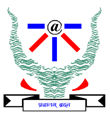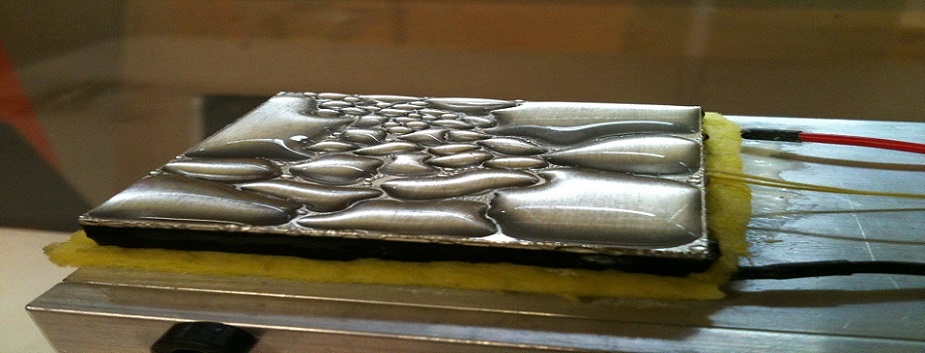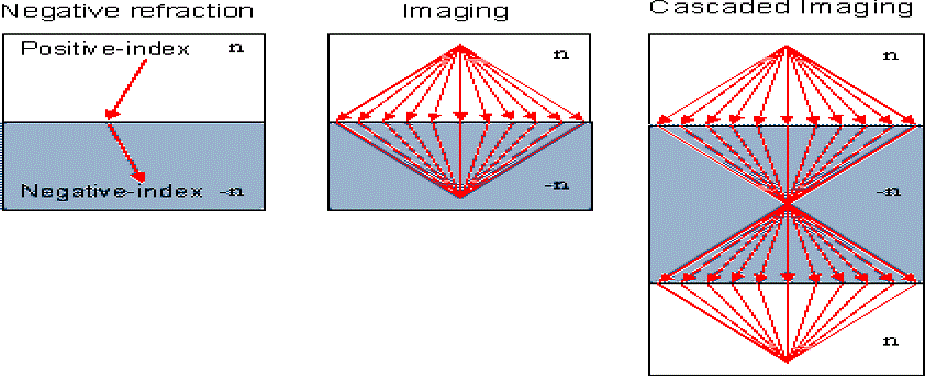|
Akhilesh Tiwari |

|
Akhilesh Tiwari |
 The topic is a part of study on the condensation-convection coupling in a greenhouse space applications
(condensation on the walls and / or on the plant surface) and the control of condensation on the internal
walls of a manned space cabin (outside condensers) to ensure good living conditions for astronauts in case
of flights of very long duration (planetary such as for MARS or MOON). The subject was studied in partnership
with LGCB (Laboratory of Chemical and Biochemical Engineering) of University of Blaise Pascal in Clermont-Ferrand France
and INRA, Theix, the project was a part of study funded by French Space Agency.
This study aims to clarify the mechanisms of condensation / evaporation and the various couplings with a forced turbulent
flow at low Reynolds number. It is in particular to establish relations between the mass transfer associated with
condensation and of evaporation on the walls, and the corresponding heat transfer.
The objectives of this study were to perform condensation experiments on a substrate of small size on which we may control
the temperature homogeneity. Some experiments will be designed with the aim of validating the numerical models. Other experiments,
more fundamental, are to investigate the transient processes of condensation and / or evaporation, and their changes over time. Our
aim is to seek in particular to obtain correlations linking the mass flux, heat flux, and the rate of ventilation, so that one can
use these correlations in a simplified simulation code. The ground based experiments will be conducted as a part of collaborative research.
The topic is a part of study on the condensation-convection coupling in a greenhouse space applications
(condensation on the walls and / or on the plant surface) and the control of condensation on the internal
walls of a manned space cabin (outside condensers) to ensure good living conditions for astronauts in case
of flights of very long duration (planetary such as for MARS or MOON). The subject was studied in partnership
with LGCB (Laboratory of Chemical and Biochemical Engineering) of University of Blaise Pascal in Clermont-Ferrand France
and INRA, Theix, the project was a part of study funded by French Space Agency.
This study aims to clarify the mechanisms of condensation / evaporation and the various couplings with a forced turbulent
flow at low Reynolds number. It is in particular to establish relations between the mass transfer associated with
condensation and of evaporation on the walls, and the corresponding heat transfer.
The objectives of this study were to perform condensation experiments on a substrate of small size on which we may control
the temperature homogeneity. Some experiments will be designed with the aim of validating the numerical models. Other experiments,
more fundamental, are to investigate the transient processes of condensation and / or evaporation, and their changes over time. Our
aim is to seek in particular to obtain correlations linking the mass flux, heat flux, and the rate of ventilation, so that one can
use these correlations in a simplified simulation code. The ground based experiments will be conducted as a part of collaborative research.
 The Photonic crystals are the class of structured materials which shows an effect of its structural composition
on the appearance of its optical properties. The dimensions of the periodicity of the structure play an important
role in its photonic properties. A Photonic Crystal is the optical analogue of an electronic crystal. It is a periodic
dielectric structure with its dielectric constant spatially varied according to certain crystal symmetry. Photonic states
in photonic crystal are classified in to bands and gaps, frequency ranges over which optical waves are allowed or forbidden
to propagate respectively. The bands and gaps provide a fundamentally new mechanism for steering and localizing light within
a semiconductor chip. The understanding of photonic crystals may become easier by their characteristics like lattice structure
or lattice constant, shape of the individual atoms, filling fraction between the volume of atom in the unit cell and the volume
of the unit cell, dielectric constant of the constituent materials. In addition one must be aware of the effect of refractive index
as well as the Q (quality factor = / where is the width of the gap and is the resonant frequency.
The Photonic crystals are the class of structured materials which shows an effect of its structural composition
on the appearance of its optical properties. The dimensions of the periodicity of the structure play an important
role in its photonic properties. A Photonic Crystal is the optical analogue of an electronic crystal. It is a periodic
dielectric structure with its dielectric constant spatially varied according to certain crystal symmetry. Photonic states
in photonic crystal are classified in to bands and gaps, frequency ranges over which optical waves are allowed or forbidden
to propagate respectively. The bands and gaps provide a fundamentally new mechanism for steering and localizing light within
a semiconductor chip. The understanding of photonic crystals may become easier by their characteristics like lattice structure
or lattice constant, shape of the individual atoms, filling fraction between the volume of atom in the unit cell and the volume
of the unit cell, dielectric constant of the constituent materials. In addition one must be aware of the effect of refractive index
as well as the Q (quality factor = / where is the width of the gap and is the resonant frequency.
 The topic is a part of study on the condensation-convection coupling in a greenhouse space applications
(condensation on the walls and / or on the plant surface) and the control of condensation on the internal
walls of a manned space cabin (outside condensers) to ensure good living conditions for astronauts in case
of flights of very long duration (planetary such as for MARS or MOON). The subject was studied in partnership
with LGCB (Laboratory of Chemical and Biochemical Engineering) of University of Blaise Pascal in Clermont-Ferrand France
and INRA, Theix, the project was a part of study funded by French Space Agency.
This study aims to clarify the mechanisms of condensation / evaporation and the various couplings with a forced turbulent
flow at low Reynolds number. It is in particular to establish relations between the mass transfer associated with
condensation and of evaporation on the walls, and the corresponding heat transfer.
The objectives of this study were to perform condensation experiments on a substrate of small size on which we may control
the temperature homogeneity. Some experiments will be designed with the aim of validating the numerical models. Other experiments,
more fundamental, are to investigate the transient processes of condensation and / or evaporation, and their changes over time. Our
aim is to seek in particular to obtain correlations linking the mass flux, heat flux, and the rate of ventilation, so that one can
use these correlations in a simplified simulation code. The ground based experiments will be conducted as a part of collaborative research.
The topic is a part of study on the condensation-convection coupling in a greenhouse space applications
(condensation on the walls and / or on the plant surface) and the control of condensation on the internal
walls of a manned space cabin (outside condensers) to ensure good living conditions for astronauts in case
of flights of very long duration (planetary such as for MARS or MOON). The subject was studied in partnership
with LGCB (Laboratory of Chemical and Biochemical Engineering) of University of Blaise Pascal in Clermont-Ferrand France
and INRA, Theix, the project was a part of study funded by French Space Agency.
This study aims to clarify the mechanisms of condensation / evaporation and the various couplings with a forced turbulent
flow at low Reynolds number. It is in particular to establish relations between the mass transfer associated with
condensation and of evaporation on the walls, and the corresponding heat transfer.
The objectives of this study were to perform condensation experiments on a substrate of small size on which we may control
the temperature homogeneity. Some experiments will be designed with the aim of validating the numerical models. Other experiments,
more fundamental, are to investigate the transient processes of condensation and / or evaporation, and their changes over time. Our
aim is to seek in particular to obtain correlations linking the mass flux, heat flux, and the rate of ventilation, so that one can
use these correlations in a simplified simulation code. The ground based experiments will be conducted as a part of collaborative research.